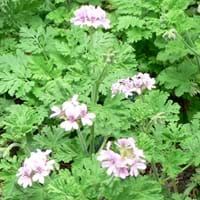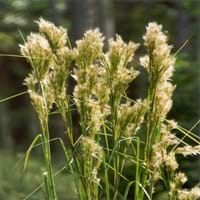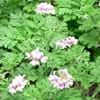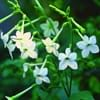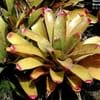Life Span
Annual
Perennial
Type
Tender Perennial
Grass
Origin
Hybrid origin
Caribbean, Central America
Types
herbaceous annuals
Broomsedge Bluestem, Broomsedge
Number of Varieties
Not Available
Habitat
Temperate Regions, Tropical Forests
ditches, Grassland, Moist Ditches, Moist Soils, Roadsides
USDA Hardiness Zone
10-15
5-9
AHS Heat Zone
Not Available
10 - 5
Sunset Zone
8, 9, 14, 15, 16, 17, 18, 19, 20, 21, 22, 23, 24
H1, 3a, 3b, 4, 5, 6, 7, 8, 9, 14, 15, 16, 17, 18, 19, 20, 21, 22, 23, 24
Habit
Clump-Forming
Upright/Erect
Flower Color
White, Light Pink
Cream, Green, White
Flower Color Modifier
Bicolor
Bicolor
Fruit Color
Not Available
Not Available
Leaf Color in Spring
Green, Yellow green
Green, Blue Green
Leaf Color in Summer
Green, Gray Green, Yellow green
Light Green
Leaf Color in Fall
Green, Gray Green, Yellow green
Gray Green, Yellow green, Bronze
Leaf Color in Winter
Light Green
Gold, Tan, Bronze
Leaf Shape
Linear to lanceolate
Grass like
Plant Season
Spring, Summer, Fall, Winter
Fall, Winter
Sunlight
Full Sun, Partial Sun
Full Sun, Partial Sun
Type of Soil
Loam, Sand
Clay, Loam, Sand
The pH of Soil
Neutral, Alkaline
Acidic, Neutral, Alkaline
Soil Drainage
Well drained
Average
Bloom Time
Indeterminate
Late Summer, Early Fall, Fall, Late Fall, Early Winter
Tolerances
Drought
Not Available
Where to Plant?
Ground
Ground
How to Plant?
Root Division, Seedlings
Root Division, Seedlings
Plant Maintenance
Medium
Medium
Watering Requirements
Water when soil is dry
Keep ground moist, Water Deeply
In Summer
Lots of watering
Lots of watering
In Spring
Moderate
Moderate
In Winter
Average Water
Average Water
Soil pH
Neutral, Alkaline
Acidic, Neutral, Alkaline
Soil Type
Loam, Sand
Clay, Loam, Sand
Soil Drainage Capacity
Well drained
Average
Sun Exposure
Full Sun, Partial Sun
Full Sun, Partial Sun
Pruning
Remove damaged leaves, Remove dead branches, Remove dead leaves
Cut or pinch the stems, Remove damaged leaves, Remove dead branches, Remove dead leaves
Fertilizers
All-Purpose Liquid Fertilizer
All-Purpose Liquid Fertilizer
Pests and Diseases
Red blotch
Red blotch
Plant Tolerance
Drought
Drought
Flower Petal Number
Single
Single
Fragrant Bark/Stem
Yes
No
Foliage Texture
Medium
Coarse
Foliage Sheen
Matte
Matte
Attracts
Butterflies
Birds, Butterflies
Allergy
Not Available
Not Available
Aesthetic Uses
Landscape Designing, Showy Purposes
Ground Cover
Beauty Benefits
Not Available
Not Available
Environmental Uses
Air purification
Air purification, Food for animals, Food for birds, Provides ground cover, Wildlife
Medicinal Uses
Fever, Intestinal irritations, Kidney problems, Respiratory Disorders, Wounds
Not Available
Part of Plant Used
Flowers, Leaves, Seeds
Seeds
Other Uses
As a tea substitute, Culinary use, Medicinal oil, Oil is used in perfume, soaps, creams, etc., Used as essential oil, Used As Food
Used as Ornamental plant
Used As Indoor Plant
No
No
Used As Outdoor Plant
Yes
Yes
Garden Design
Bedding Plant, Container, Edging, Hanging Basket, Herb / Vegetable, Houseplant, Mixed Border, Rock Garden / Wall, Tropical
Container, Dried Flower/Everlasting, Feature Plant, Mixed Border, Rock Garden / Wall
Botanical Name
PELARGONIUM 'Bitter Lemon'
ANDROPOGON glomeratus
Common Name
Bitter Lemon Scented Geranium, Scented Geranium
Bushy Beardgrass, Bushy Bluestem, Bushy Broom Grass
In Hindi
Pelargonium
Bushy Bluestem plant
In German
Pelargonium
Bushy Bluestem Pflanze
In French
pélargonium
plante buissonnante Bluestem
In Spanish
pelargonium
planta arbustiva andropogon
In Greek
Pelargonium
φυτό θαμνώδη BLUESTEM
In Portuguese
pelargônio
planta arbustiva Bluestem
In Polish
pelargonia
Krzaczaste Bluestem roślin
In Latin
Pelargonium
Bushy bluestem herba
Phylum
Magnoliophyta
Magnoliophyta
Class
Magnoliopsida
Liliopsida
Order
Geraniales
Cyperales
Family
Geraniaceae
Poaceae
Genus
Pelargonium
Andropogon
Clade
Angiosperms, Eudicots, Rosids
Angiosperms, Commelinids, Monocots
Tribe
Not Available
Andropogoneae
Subfamily
Not Available
Panicoideae
Season and Care of Scented Geranium and Bushy Bluestem
Season and care of Scented Geranium and Bushy Bluestem is important to know. While considering everything about Scented Geranium and Bushy Bluestem Care, growing season is an essential factor. Scented Geranium season is Spring, Summer, Fall and Winter and Bushy Bluestem season is Spring, Summer, Fall and Winter. The type of soil for Scented Geranium is Loam, Sand and for Bushy Bluestem is Clay, Loam, Sand while the PH of soil for Scented Geranium is Neutral, Alkaline and for Bushy Bluestem is Acidic, Neutral, Alkaline.
Scented Geranium and Bushy Bluestem Physical Information
Scented Geranium and Bushy Bluestem physical information is very important for comparison. Scented Geranium height is 38.14 cm and width 45.70 cm whereas Bushy Bluestem height is 120.00 cm and width 75.00 cm. The color specification of Scented Geranium and Bushy Bluestem are as follows:
Scented Geranium flower color: White and Light Pink
Scented Geranium leaf color: Green and Yellow green
Bushy Bluestem flower color: Cream, Green and White
- Bushy Bluestem leaf color: Green and Blue Green
Care of Scented Geranium and Bushy Bluestem
Care of Scented Geranium and Bushy Bluestem include pruning, fertilizers, watering etc. Scented Geranium pruning is done Remove damaged leaves, Remove dead branches and Remove dead leaves and Bushy Bluestem pruning is done Cut or pinch the stems, Remove damaged leaves, Remove dead branches and Remove dead leaves. In summer Scented Geranium needs Lots of watering and in winter, it needs Average Water. Whereas, in summer Bushy Bluestem needs Lots of watering and in winter, it needs Average Water.
